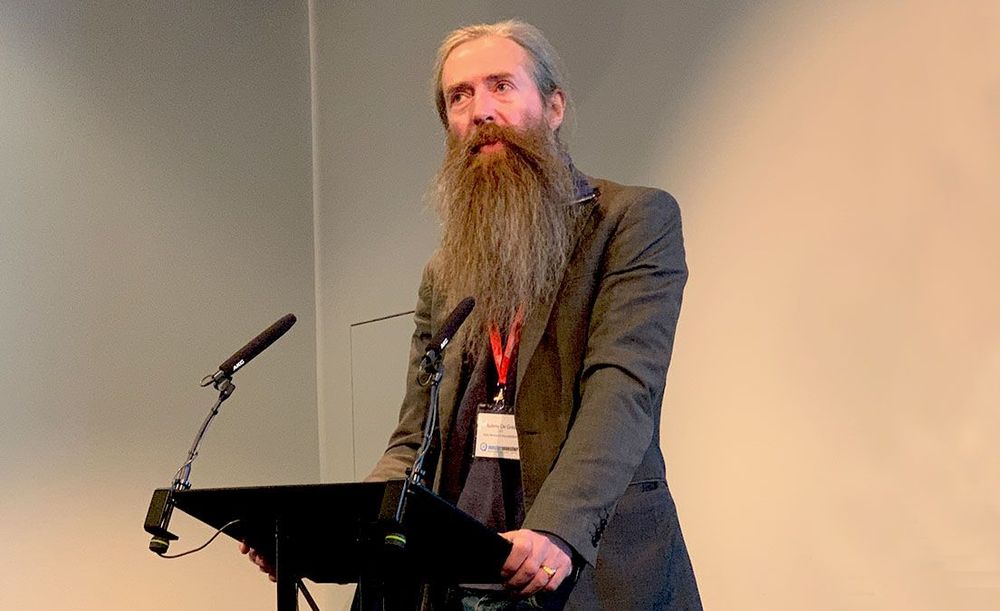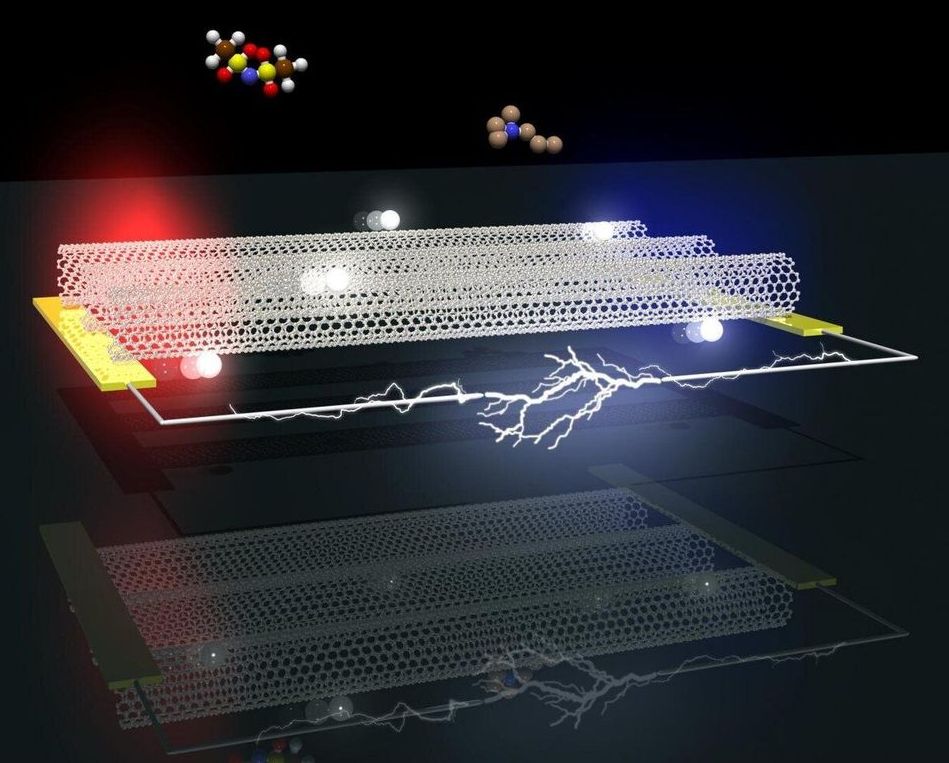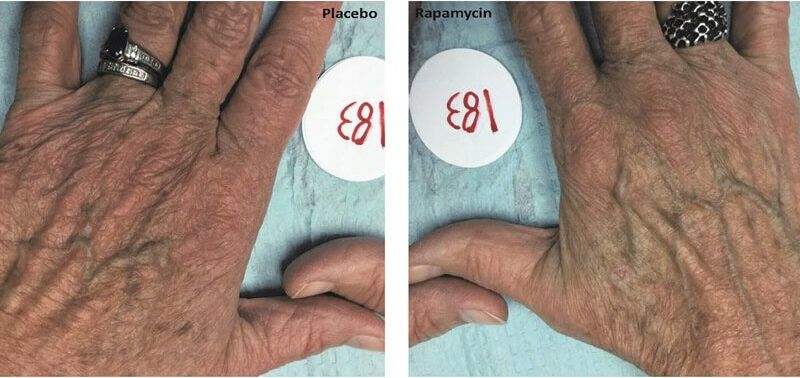Page 7221
Dec 2, 2019
Higgs Boson Mass Explained in New Theory
Posted by Paul Battista in category: particle physics
Three physicists have proposed a new solution to one of the deepest mysteries in particle physics: why the Higgs boson has such a tiny mass.
Scientists have theorized about the other side of a black hole for decades. Here’s what they’ve come up with so far.
A new study has called into question the prevailing notion that the universe is “flat.” The stakes of this cosmological debate are huge.
Dec 2, 2019
Solving the thermoelectric ‘trade-off’ conundrum with metallic carbon nanotubes
Posted by Paul Battista in categories: energy, nanotechnology, transportation, wearables
Scientists from Tokyo Metropolitan University have used aligned “metallic” carbon nanotubes to create a device which converts heat to electrical energy (a thermoelectric device) with a higher power output than pure semiconducting carbon nanotubes (CNTs) in random networks. The new device bypasses the troublesome trade-off in semiconductors between conductivity and electrical voltage, significantly outperforming its counterpart. High power thermoelectric devices may pave the way for more efficient use of waste heat, like wearable electronics.
Thermoelectric devices can directly convert heat to electricity. When we think about the amount of wasted heat in our environment like in air conditioning exhausts, vehicle engines or even body heat, it would be revolutionary if we could somehow scavenge this energy back from our surroundings and put it to good use. This goes some way to powering the thought behind wearable electronics and photonics, devices which could be worn on the skin and powered by body heat. Limited applications are already available in the form of body heat powered lights and smartwatches.
The power extracted from a thermoelectric device when a temperature gradient is formed is affected by the conductivity of the device and the Seebeck coefficient, a number indicating how much electrical voltage is generated with a certain difference in temperature. The problem is that there is a trade-off between the Seebeck coefficient and conductivity: the Seebeck coefficient drops when the device is made more conductive. To generate more power, we ideally want to improve both.
Dec 2, 2019
New principle for activation of cancer genes discovered
Posted by Paul Battista in categories: biotech/medical, computing
Researchers have long known that some genes can cause cancer when overactive, but exactly what happens inside the cell nucleus when the cancer grows has so far remained enigmatic. Now, researchers at Karolinska Institutet in Sweden have found a new mechanism that renders one canonical driver of cancer overactive. The findings, published in Nature Genetics, create conditions for brand new strategies to fight cancer.
One gene that is called MYC is central for normal cell growth. However, if the gene mutates and/or becomes overactive, it could lead to abnormal cell growth and cancer. It is previously known that so-called super-enhancers, large regions in the DNA that develop near cancer genes, could somehow make the MYC gene overactive.
The current study increases our understanding of how this process takes place by highlighting how environmental cues can conspire with the architecture of the cell nucleus to cause overexpression. With the help of new laboratory techniques and computer models, the researchers show how the activation of the pathway of the signal-molecule WNT charges the super-enhancer with proteins that lures the MYC gene to the cell nucleus pores. The pores are situated on the membrane of the cell nucleus and control the flow of information between the cell nucleus and the cytoplasm.
Dec 2, 2019
Brain receptor that regulates body heat may also help accelerate weight loss
Posted by Paul Battista in categories: biotech/medical, food, health, neuroscience
Obesity is an important issue.
The brain mechanism that enables us to maintain a constant body temperature may also be the key to rapid weight loss, a new study finds. In experiments involving mice that were given a calorie-restricted diet, scientists at Scripps Research discovered that blocking a brain receptor that normally regulates body heat resulted in significant weight reductions.
The findings will be further explored as a potential treatment approach for obesity, which the World Health Organization has called a global epidemic. Obesity affects virtually all age and socioeconomic groups—increasing risk for heart disease, stroke, diabetes, cancer and many other serious health conditions.
Continue reading “Brain receptor that regulates body heat may also help accelerate weight loss” »
Dec 2, 2019
Reviewing the Gut Microbiome’s Influence on Skeletal Muscle Mass
Posted by Paul Battista in category: biotech/medical

Researcher Dr. Michael Lustgarten has recently published a compact and very readable review that focuses on the role of the gut microbiome and its influence on skeletal muscle mass.
The gut microbiome
Continue reading “Reviewing the Gut Microbiome’s Influence on Skeletal Muscle Mass” »
Dec 2, 2019
How to Start at The Finish Line: Cancer Survivor
Posted by Paul Battista in categories: biotech/medical, finance, neuroscience

https://www.youtube.com/watch?v=J2G-Sq7iOuM
Hollie Fraser, founder of Books On The Move, worldwide book sharing movement, creative director and ideaXme literature, reading and writing ambassador interviews Matthew Newman, 2019 best Kindle book author.
Continue reading “How to Start at The Finish Line: Cancer Survivor” »
Dec 2, 2019
Rapamycin May Slow Skin Aging, Drexel Study Reports
Posted by Paul Battista in categories: biotech/medical, life extension
The search for youthfulness typically turns to lotions, supplements, serums and diets, but there may soon be a new option joining the fray. Rapamycin, a FDA-approved drug normally used to prevent organ rejection after transplant surgery, may also slow aging in human skin, according to a study from Drexel University College of Medicine researchers published in Geroscience.
Basic science studies have previously used the drug to slow aging in mice, flies, and worms, but the current study is the first to show an effect on aging in human tissue, specifically skin – in which signs of aging were reduced. Changes include decreases in wrinkles, reduced sagging and more even skin tone — when delivered topically to humans.
“As researchers continue to seek out the elusive ‘fountain of youth’ and ways to live longer, we’re seeing growing potential for use of this drug,” said senior author Christian Sell, PhD, an associate professor of Biochemistry and Molecular Biology at the College of Medicine. “So, we said, let’s try skin. It’s a complex organism with immune, nerve cells, stem cells – you can learn a lot about the biology of a drug and the aging process by looking at skin.”
















